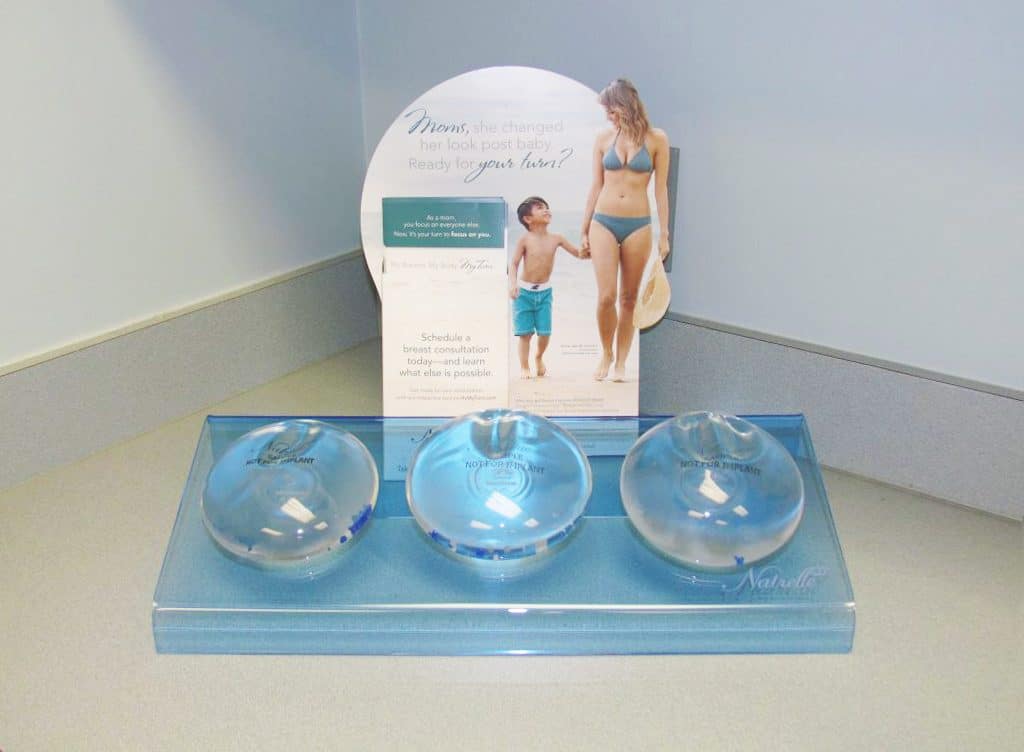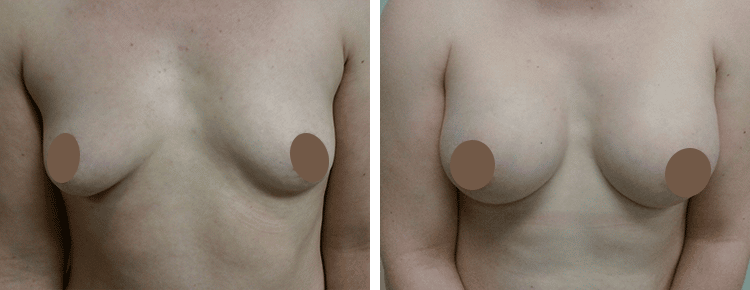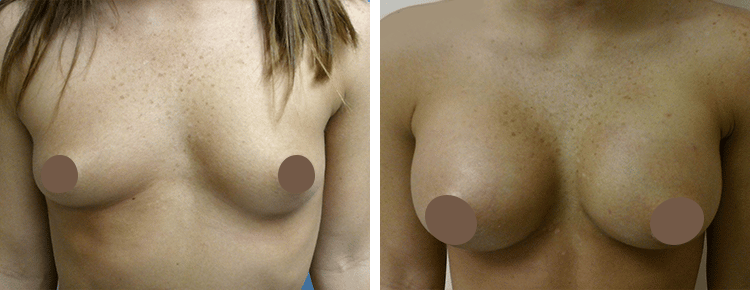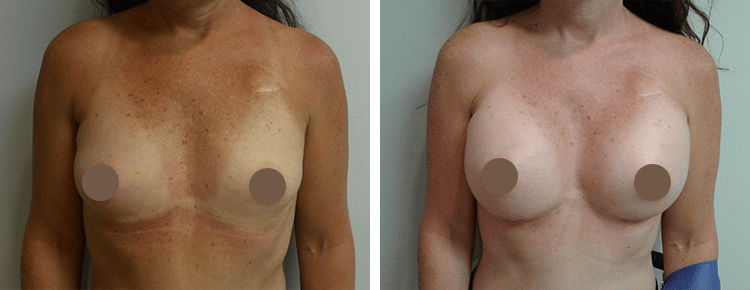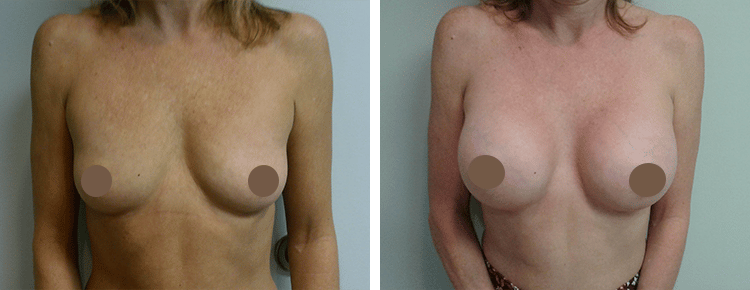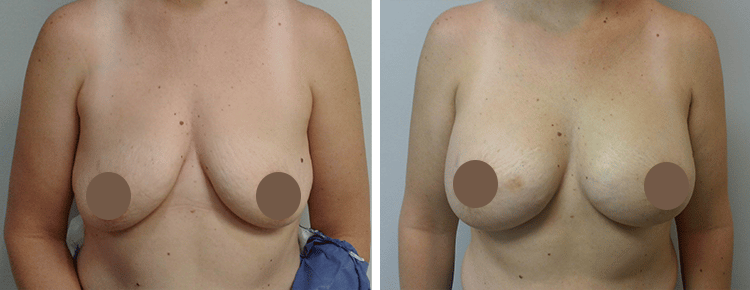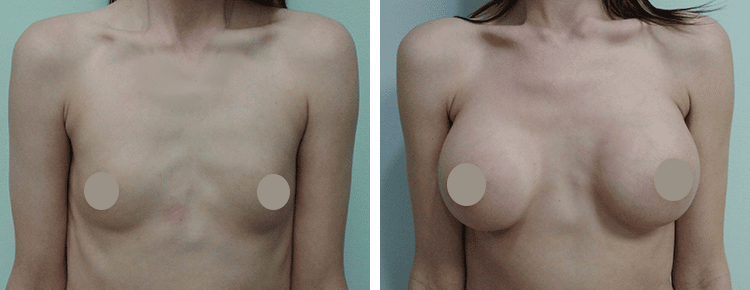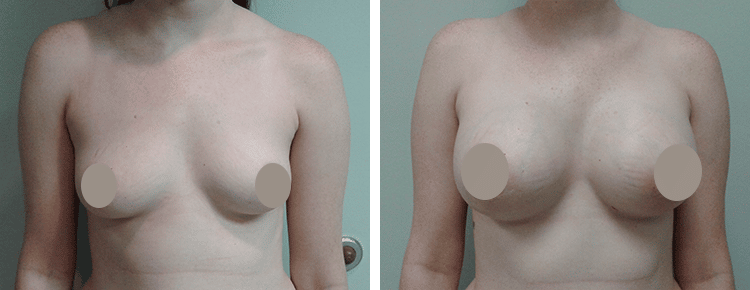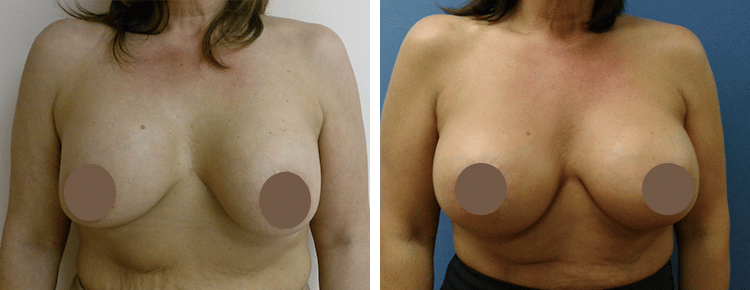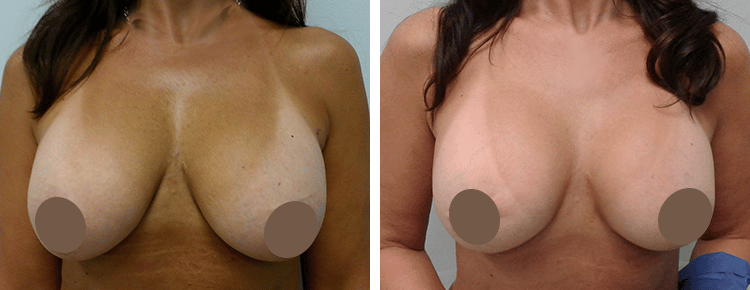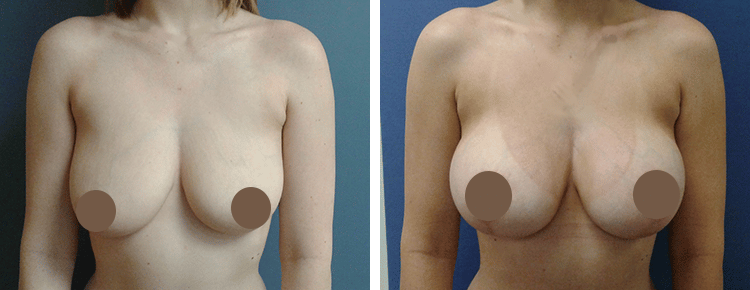Many women are unhappy with the size and projection of their breasts as they change over the course of their lives. These changes can be due to things like pregnancy, aging, weight loss, or genetics. Well-proportioned breasts are often a sign of youth and femininity, and a breast augmentation surgery (sometimes called a “boob job”) with Dr. Daniel Richardson and Dr. Anna Pavlov can help women achieve their desired profile and greater self-confidence.
This breast enhancement procedure is one of the most well-known plastic surgery procedures available. It uses incisions to place breast implants within the existing breast, which create the desired shape and size and enhance the overall appearance of the breasts. Breast augmentation can be performed along with other plastic surgery procedures, including a breast lift or breast reconstruction. Different implants are available and can achieve different results. Two common types are:
Any woman who has fully-developed breasts and is unhappy with their size and projection can consider breast augmentation surgery. Pregnancy and weight gain or loss can greatly affect the results, so candidates should be participating in a healthy, active lifestyle and able to undergo invasive surgery. Candidates may not be pregnant or breastfeeding. Your plastic surgeon will take a detailed medical history to ensure each patient is in good health.
During your consultation, your surgeon will help you determine which breast implants are best, as well as which kind of incision will be used during your surgical procedure. Some include:
These various incisions will aid in different techniques and offer better access for different breast implants. After the anesthesia is administered and the incision is created, the implant is placed either on top of or underneath the pectoral muscle. This choice offers additional options for breast augmentation results — placing the breast implants on top of the pectoral muscle gives greater projection and is less painful, while placing it underneath the muscle gives a more natural look and feel and helps prevent scar complications. All options will be discussed during your initial consultation. In all, the entire procedure takes 1-2 hours.
It’s very important that the new breasts are supported during the healing process by a Supportive surgical bra or sports bra. This will support the new breast implants and keep it in place until the skin and tissues can heal and accommodate it, and it will also aid in healing by suppressing swelling. Your surgeon will determine how long the garment will need to be worn throughout the healing process, and it may be a few weeks before swelling and pain subside, which can be managed with prescribed medications. It’s also important to limit movement and strain on the chest during this time, especially if the pectoral muscles have been manipulated to accommodate the breast implants. As such, strenuous activity should be limited for several weeks.
Breast implants do require long-term maintenance. This includes checking for ruptures and having them surgically replaced if needed. You may also require additional procedures, especially as the breasts age and sag over time or due to other factors. Your plastic surgeon can direct you in how to get the best results out of your breast augmentation surgery.
The exact length of your recovery from breast augmentation will depend on the placement of your implants and other techniques used during the procedure. You can expect your complete recovery process to take about 4-6 weeks. However, you will likely start to feel well enough to return to work and most normal activities after the first week. After 4 weeks, most of your swelling will have diminished and you can resume regular exercise with the okay from your surgeon. Your board-certified plastic surgeon will provide you with an exact timeline of your breast augmentation recovery during your consultation.
After breast augmentation surgery, your incisions will be bandaged, and you will be given a supportive bra to ensure proper healing and control swelling. You can expect some discomfort, swelling, and bruising that is most significant in the first week after your procedure. Pain can be managed with prescription pain medication or an over-the-counter pain reliever. You will be provided with post-op care instructions and restrictions that you will need to follow closely to ensure successful healing. This will include no lifting or movements that could strain the incision sites. If you have small children, you will want to arrange for a caregiver to help during your recovery.
After your breast augmentation procedure, you will be given instructions on what not to do during recovery. This will include physical restrictions such as no heavy lifting or lifting the arms above the shoulder and no movements that involve the chest muscles. You should also avoid sleeping on your stomach for the first six weeks. Avoid getting your incisions wet for the first several days and no bathing for at least two weeks after your procedure. Don’t make any guesses when it comes to what you can or can’t do after your breast augmentation procedure. If you have any questions, consult your board-certified plastic surgeon.
A breast augmentation is a relatively simple and short procedure. The procedure typically takes one to two hours to complete depending on the techniques being used. Factors that can affect the length of your surgery include the type of implants you choose, incisions and placement type, and the type of anesthesia used. If you choose to combine another procedure with your breast augmentation, such as breast lift, your procedure will take longer. You can get a better estimate of how long your specific breast augmentation procedure will take during your consultation.
After your breast augmentation procedure, avoid sleeping on your stomach for at least the first two weeks. If you’re having a hard time sleeping on your back or are worried about rolling over in your sleep, place pillows by your sides. You might also try sleeping slightly inclined or with a pillow under your back to keep the pressure of your implants. You should still wear your supportive bra while you sleep for the first several weeks. After the first two weeks, you can try switching to sleeping on your side and stomach once fully healed.
During recovery from your breast augmentation, you will wear your supportive bra at all times. This minimizes swelling, helps with discomfort, and ensures proper healing and settling of your implants. You might also wear a sports bra or other soft bra that easily opens in the front to avoid straining your incision sites. During recovery, your new implants will need to drop and settle into place. Wearing a push up bra could affect the final shape and position of your breasts. You should not wear a regular underwire bra until at least six weeks after your procedure.
The amount of discomfort you experience after breast augmentation will depend on your pain tolerance, the placement of your implants, and the techniques used. You can expect the most amount of discomfort in the first few days after your procedure. You can manage pain during this time with a prescription pain medication from your surgeon. Many women feel well enough after the first few days with just an over-the-counter pain reliever. After the first week, you should feel well enough to return to work and other activities that don’t put a strain on the incision sites.
The actual breast augmentation procedure can take about one to two hours to complete, depending on the incision types and other techniques being used. The procedure will also be longer if you’ve decided to combine another procedure like liposuction or a breast lift. After your procedure, you will be sent to the recovery center where you can be monitored for a few hours while your medication wears off. You should then have a close friend or family member there to drive you home, and you will be given after- care instructions to follow during recovery. Your plastic surgeon can go over how long your specific breast augmentation procedure will take during your consultation.
To prepare for your breast augmentation procedure, avoid smoking for at least two weeks. However, the longer you can quit, the better. Smoking can cause constriction of blood vessels needed to provide nutrients to your healing surgical site, and this can cause significant wound healing complications. You should also avoid blood thinning medications and herbal supplements in the week leading up to your procedure. The day before your surgery, you will want to fill your prescription medications, have your home stocked with easy to make, healthy meals, and have a comfortable place ready where you will be able to relax and recover. You might also want movies or books or other low-impact forms of entertainment to help keep you busy. You should also arrange for someone to drive you home from your procedure and to care for you for the first day or longer if you have small children that need to be cared for.
Following your breast augmentation procedure, your breasts should not be fully submerged until your incisions have completely healed and show no scabbing. This can take about 4 weeks. This means showering only after the first few days and no bathing or swimming during this time. When swimming, you must also be aware of your exercise restrictions. It is recommended to avoid strenuous exercise for the first six weeks of your recovery. Only swim when you feel well enough and when your surgeon has given you the okay. If you have any questions about what you can and can’t do, make sure you ask your surgeon before performing them.
After your breast augmentation procedure, you will be given a surgical bra that should be worn as often as possible to minimize swelling and assist the healing process. You will want to wear a loose fitting shirt over your bra that can easily be put on and taken off. Be careful when lifting your shirt off as over-the-head motions could strain your new incisions. After several weeks, you will be able to switch to wearing a sports bra and whatever outer clothing you’d like. It is recommended to avoid underwire or push up bras until at least 6 weeks after your procedure.
Because breast augmentation is a cosmetic procedure, it is not usually covered by insurance. Typically, the only cases that are covered by insurance are those performed following a mastectomy from breast cancer. Talk with your surgeon about your payment options and how much you can expect to pay out of pocket for your procedure. Breast augmentation typically costs around $5,700 but this number varies depending on the techniques being used. You will also want to talk with your insurance company to determine if they do cover any of your procedure and other important questions regarding future breast conditions and procedures.
After your breast augmentation, your body will begin to develop tissue around your implant. In some cases, this collagen builds up and begins to tighten, squeezing the implant and resulting in a hardened feeling. There are some things you can do to prevent the chances of this happening such as breast massage. Your surgeon can provide you with instructions on how you can properly massage your breasts at home. However, there is no way to completely prevent a capsular contracture from occurring. If it does occur, you will need to meet with your surgeon about a revision procedure to remove the hardened scar tissue.





 (228) 897-1400
(228) 897-1400